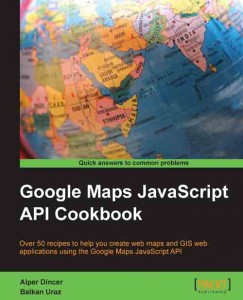Book Review : Administering ArcGIS for Server
This is the 3rd book review in my blog. Of course, it is related to GIS stuff 🙂
Name of the book is “Administering ArcGIS for Server” which is a complete guide to ArcGIS for Server (even I can’t adopt the new naming scheme of ESRI).
The author of the book “Hussein Nasser” is also a winner of ESRI DevSummit Code Challenge in 2007 like me 🙂 His career and success proves that he has deep knowledge of ArcGIS for Server. In general the book is about ArcGIS for Server 10.x series which the most up to date release and there are 8 chapters with 2 appendixes. Let’s explore the chapters in details :
1- Chapter 1 : Best practices for Installing ArcGIS for Server :
This is the beginning of the book and it is quite normal to start with installing the program. This part is quite adequate on ArcGIS for Server, but I wish there is a extra chapter or part for installing ArcSDE with multiple database types. The most problematic part about installing ArcGIS for Server is the integration of ArcSDE in my experience even though I can’t work much on ESRI stuff nowadays 🙂
2- Chapter 2 : Authoring Web Services :
As it is name implies, this part is about web services on ArcGIS for Server. This part covers both ESRI related and OGC standard services.
3- Chapter 3 : Consuming GIS Services :
You have installed the ArcGIS for Server and publish some services, so it is time to consume them. This part covers the consuming of services in various software or APIs, which are ArcMap, QGIS, Google Earth, ESRI ArcGIS JavaScript API. Also there is a section about editing.
4- Chapter 4 : Planning and Designing GIS Services :
Now you know the basics of ArcGIS for Server, it is time for the real life case studies to plan and design your services. The case study is about a locator services for restaurants with ArcGIS for Server.
5- Chapter 5 : Optimizing GIS Services :
Chapters are getting more advanced as the book evolves 🙂 This is one of the most important part for advanced user. Even you have knowledge about previous chapters, you will find some info or trick in this chapter about optimizing your services.
6- Chapter 6 : Clustering and Load Balancing :
This is also like the Chapter 5. If you want a sustainable web services, then you should check this part of the book. It gives great information about the continuity of your GIS services.
7- Chapter 7 : Securing ArcGIS for Server :
You setup everything but your services are default open the public. In order to protect your data, you should secure it with the mechanisms integrated to ArcGIS for Server. This chapter is dedicated to security.
8- Chapter 8 : Server Logs :
This is also quite important part to find the bottlenecks of problems with the ArcGIS for Server, because logs keep the journal of the ArcGIS for Server and tell you the problem if there is any. This part is a serious way to learn on tracing the bugs or problems about your services.
As it is written about, the book covers all the parts of ArcGIS for Server and it is a great book for people who work with ArcGIS for Server. I’m quite happy with the book except the need for ArcSDE installation and management with ArcGIS for Server. May be this is out of the book scope, but it is the most important complementary thing for the book.
As a result, I suggest this book to people who works with ArcGIS for Server without any doubt. You can also find the PROs and CONs of the book below.
PROs:
+ Update to date release
+ There are some scenarios to use in your projects.
+ Advanced usages of ArcGIS for Server is also included.
+ “Selecting the Right Hardware” and “Server Architecture” parts are good both for newbies and professionals
CONs:
– PostgreSQL/PostGIS support is much better than MSSQL 🙂
– ArcSDE installation could be a better.
You can get the book from this address.
